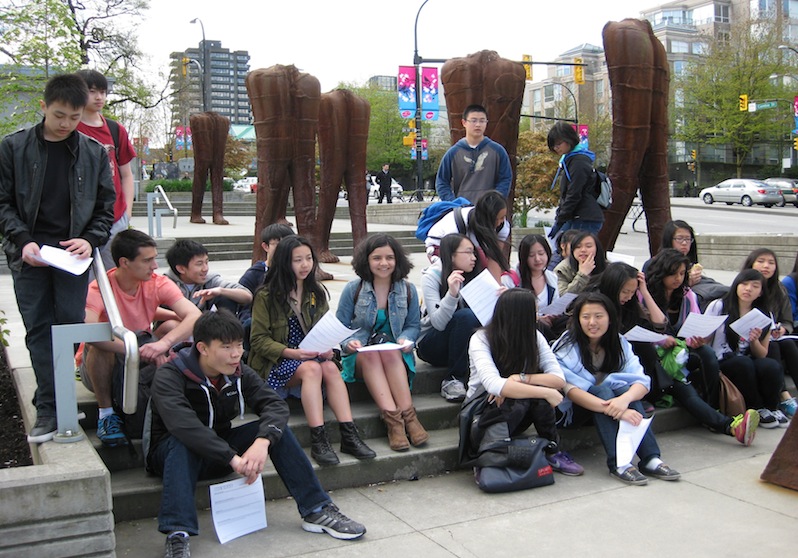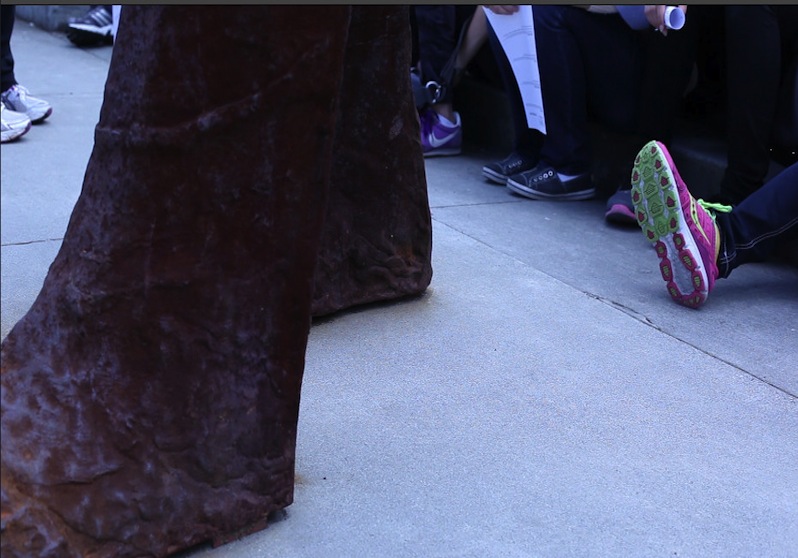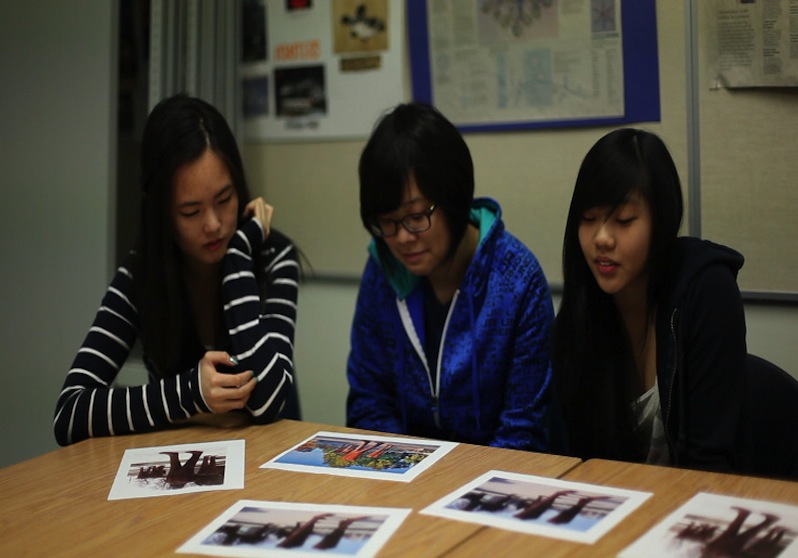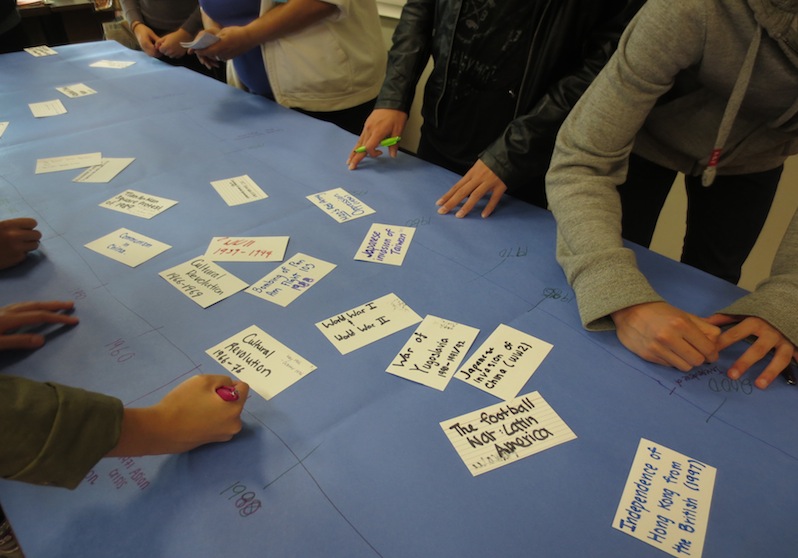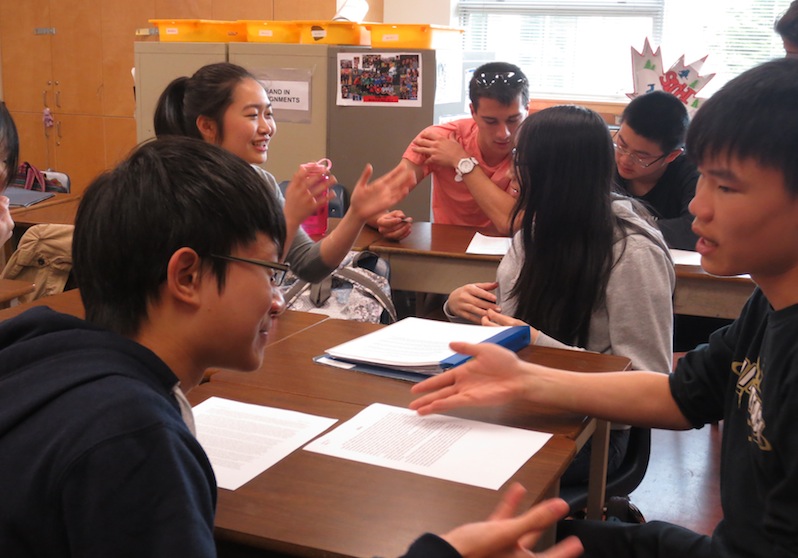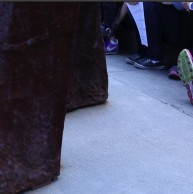Burnett Secondary Gr 10
Arts Education, Language Arts, Social Studies
School
Burnett Secondary School, Richmond, BC
Teachers
Leanne McColl and Farrah Merali
Artist
Jessica Hallenbeck
Class
Grade 10 Humanities Class
Connection to the Vancouver Biennale Exhibition
Vancouver Biennale Legacy: Walking Figures (Magdelena Abakanowicz, Poland) – Students reflected on the figures as celebrating sameness and walking without guidance, reason or mindfulness. They then investigated the ideas of comparing these figures to their ancestors who immigrated, and to the experience of Indigenous populations in Canada.
The curatorial theme of the 2014-2016 exhibition is Open Borders / Crossroads Vancouver. This project relates to the Exhibition Theme in many ways:
- Crosses international borders as students investigate immigration to Canada and the history of their families from all over the world
- Students examine their own personal borders in relation to their values and beliefs
- Creates a crossroads of connection as students learn about the different identities that exist in Canada due to immigration and the experiences of First Nations people in Canada
- Students learn to cross borders of communication in expressing themselves through literature and film
Overview
Exploring what it means to an individual in a collective and the consequences of assimilation for First Nations people and new immigrants, students inquired into the BIG IDEA of how personal histories, social values and events shape the individual and how the past impacts the present. Students made connections with ancestral histories and began to understand more about their past through a walking tour to Chinatown, Japantown, and the Walking Figures. Through workshops and research, students reflected on how personal histories intersect with personal and community identity. Students considered social values in Canadian history, researching immigration, assimilation and the treatment of Aboriginals, including Residential Schools. Working with their teachers and artist, students researched their own family history and created an history about the history of one of their ancestors, reflecting on the importance of telling one’s story. The istory is from the Arrivals Personal Legacy process developed by Diane Roberts. Throughout the project, students learnt how to express themselves through film by creatively documenting their istories and learning process in a film. Reflecting on how the past shapes the present, students shared their learning with their school and community through a film screening to their families.
BIG IDEAS
The past impacts the present, and more personally, our past impacts our present.
Guiding Questions
How do we develop our personal identity within a collective of personal identities? What may the consequences of assimilation be, especially as experienced from a First Nations perspective and from the perspective of an immigrant to Canada? How do our personal stories come together to shape our collective experience and history?
Curriculum Access
Arts Education: Students learnt how to interpret pieces of art work, and discovered that interpretations can change through over time. Students expressed themselves creatively through film.
Language Arts: Students created a story based on research about the history of their family, telling the story of one of their ancestors. Students were encouraged to add elements of fiction and to describe and convey the emotional journey of new immigrants to Canada.
Social Studies: Students depicted Canada and its cultural identity in a timeline, showing how it has transformed over the past decades.
Learning Process
After being introduced to the project, students learnt how to express and communicate through film in a creative way and began their inquiry into how the past shapes the present. The class went on a walking tour of Vancouver including Gastown, Chinatown and Japantown where the students journeyed through some of the communities in Vancouver that have been impacted by history, immigration and relocation. We ended the tour at the art installations and used the art to facilitate connections between the students’ experiences and history. At the Walking Figures, students began to make connections and understand the importance of ancestral histories. Drawing on their walking tour experience, students did preliminary research on their own family history and drafted an istory about a pivotal moment in the lives of their ancestors. The students reflected on their own heritage, personal and community identity after listening to Rosemary Georgeson’s life journey as a First Nations woman grew up off reserve at the south end of Galiano. (their reserve was at the north end of Galiano). She shared with the class about how First Nations people were treated as “disposable people” in the 1960s and how her life has been affected by residential school. Rosemary grew up with her friends being taken out of Galiano school and sent to Kuper Island Residential School. Her friends kept getting taken away and some came back and some did not. The students also learned about the struggle Rosemary and her family faced to run a boating and fishing business and the interconnections between her people and immigrant populations.
During a session jointly facilitated by the artist and teacher, the students worked in groups and rotated through three inquiry challenge stations. At the history station, students picked from a deck of cards with major historical events to create a visual timeline from 1900 onward. Students were encouraged to add to the timeline historical and regional events (including inventions) significant to their ancestry and families in the language of their ancestors. At the journey station, a river was used as a symbol of change, students learnt to empathize with how their ancestors may have felt when they first arrived in a new country and how their emotions may have changed over time. At the istory station, students paired up and practiced reading their story aloud for filming. The students then incorporated the experience learnt from these activities into their istory. The highlights of this inquiry process were captured on film featuring one key sentence from every student’s istory. During the family film-screening event, students shared their istories with their families and community with a collective voice through a creative video production.
Student Creation
- istory
- Timeline of significant events through history
- Video about their creative process and iStories
Taking Action
Students shared their iStories at a final film screening for their families to share and open a dialogue on how personal histories intersect with personal and community identity.
Time Line
April
- Project launch and introduction to the Vancouver Biennale
- Walking tour to Gastown, Chinatown, Japantown and Walking Figures
- Interviews with students
- Begin drafting iStories. Elements include: Name of your ancestor and your relationship to them, Birth and death dates for ancestor, Where they were born and where they died, What events happened? What was happening in BC? Images to present with the story an object of significance relating to their ancestor
- Class visit by Rosemary Georgeson
- Practice presentation of the story
- Timeline and writing exercises
- Finish iStories and rehearse
May
- Gather images to accompany the stories
- Record iStories on film
- Family film screening
Reflection
School Board Consultant: Leanne McColl
My experience working on this project was overwhelmingly positive. It was a pleasure to work as a team of educators, and to watch the students engage so deeply in their learning. I cannot speak more highly of our artist collaborator. She was amazingly creative, and showed great expertise in inquiry and in teaching in general. She had a great manner with our students, and was highly professional. Thank you to the Biennale for an amazing experience.
Teacher: Farrah Merali
The Biennale Project has been inter-weaved through the different units and themes that the students have been exploring in Social Studies 10. The learning experience for the students has really been enhanced. The students have been exposed to so many different mediums and styles of learning/teaching. Over the course of the semester, the students have used art as a means of deepening their understanding of their personal histories. Having Rosemary (First Nations) share her personal history –9 generations on Galliano Island, the students have been able to connect with the curriculum far better and also connect with their own personal histories. I think the students are very excited to see how their histories (iStories) will come alive on the video and also to see how they are an active agent in a much larger historical context—global/national/local. For me, having the opportunity to work in a “think-tank” with such highly skilled professionals (Leanne, Jessica and Rosemary) has pushed the boundaries of my teaching.
